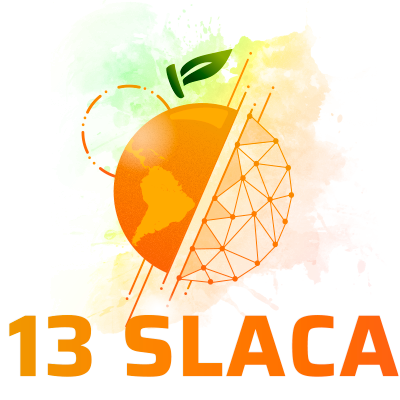Anais do Simpósio Latino Americano de Ciências de Alimentos
Anais do 13º Simpósio Latino Americano de Ciência de Alimentos
Anthocyanin-rich pigment prepared from jabuticaba (Myrciaria cauliflora Mart.) skin by-product as a natural yogurt color additive
Como citar esse trabalho?
Para citar este trabalho use um dos padrões abaixo:
Como citar esse trabalho?
The consumption of yogurt is expected to increase between 2019-2024, but some synthetic additives commonly founded in yogurts can be one of the factors to restrict its consumption and limit the market growth. This study aimed to use an anthocyanin-rich pigment prepared from Jabuticaba (Myrciaria cauliflora Mart.) skin by-product to coloring yogurt. The aqueous extract from Jabuticaba skins with maltodextrin were spray dried and used to color sweetened whole fat yogurt samples (0.5, 1.0, 1.5 and 2.0 g/100g w/w), that were added with potassium sorbate and stored for up to 28 days under refrigeration. Yogurts didn’t show post-acidification during storage. All samples but 1.5 g/100 g extract concentration presented during the first 7 days a slight pH reduction and then pH values slightly greater. Total solids content varied between 21 and 24 g/100 g with no clear correlation with the extract. Anthocyanin content varied from 1.26 to 4.83 mg cyanidin-3-glucoside equivalent increasing with extract concentration. During storage, there was a significant slight decrease in anthocyanin content, possibly indicating its degradation. The luminosity (L*) decreased with increasing extract concentration as anthocyanins impart color to the samples. The a* and b*color components indicated predominance of red and blue color, respectively. During storage, a* values decreased, possibly indicating anthocyanin degradation, and b* values changed significantly with no clear tendency. The rheological behavior was typical for yogurts with no alteration by different extract concentration. Casein gel of yogurt was probably disrupted by the extract addition, decreasing yogurt apparent viscosity. The sensory evaluation showed a well acceptance for the attributes appearance, color, odor, texture, taste and overall impression, indicating applicability for the extract, once the panelists didn’t perceive negative effects. Taken together, these data indicate that this natural pigment can potentially substitute synthetic color additives for mixed berry yogurts, reducing waste and increasing antioxidant content.
- 1 Faculdade de Zootecnia e Engenharia de Alimentos da Universidade de São Paulo (FZEA/USP)
- 2 Universidade Federal do Oeste da Bahia (UFOB)
- 3. Formulação e processamento de alimentos (FP)
Discussões Científicas de Qualidade
Com ~200 mil publicações revisadas por pesquisadores do mundo todo, o Galoá impulsiona cientistas na descoberta de pesquisas de ponta por meio de nossa plataforma indexada.
Confira nossos produtos e como podemos ajudá-lo a dar mais alcance para sua pesquisa:
Como citar esse proceedings?
Esse proceedings é identificado por um DOI , para usar em citações ou referências bibliográficas. Atenção: este não é um DOI para o jornal e, como tal, não pode ser usado em Lattes para identificar um trabalho específico.
Verifique o link "Como citar" na página do trabalho, para ver como citar corretamente o artigo

